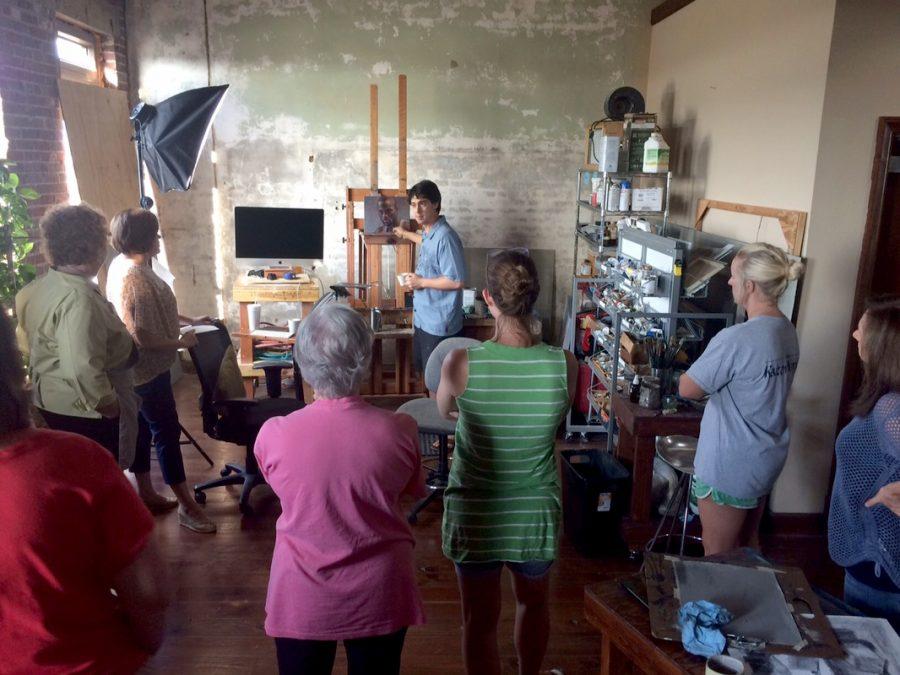Caleb O’Connor began creating art as a child. His mother tells stories of him in elementary school doodling in class. Once, his teacher picked up one of his drawings and asked him who drew it. When Caleb said he had, the teacher yelled at him, saying he must be lying.
Now, Caleb and his wife, Ruth, run an art studio and teach classes in Downtown Tuscaloosa. They’ve been in the city six years.
During a more advanced portraiture class, Ruth laughs that she told the model to arrive at the wrong time. To make up for it, she offers to model herself for the students.
The class gathers around as Caleb carefully sets her up under the lights. He talks of the importance of proper lighting when painting models.
All watch with awe on their faces as he begins to sketch. Before their eyes, Ruth’s face begins to form in graphite.
“Learning how to start a good painting is very important,” Caleb says.
He remarks that usually he wouldn’t do a full sketch first, that this is just for the purpose of teaching.
Caleb paints and blends, finding a skin tone color and hair color to his liking. He works until the painting is nearly finished.
The process takes about an hour, and when it is complete, Ruth asks to get up and see.
“Yup, that’s me,” she says, gazing at her own image.
Caleb and Ruth weren’t always part of the Tuscaloosa community. A committee recruited Caleb to paint murals for the Tuscaloosa County Courthouse. The committee selected him based on his previous work and his potential to create murals of historical events.
“They felt that his portraiture was able to convey emotions,” Ruth says. “We didn’t apply, didn’t know. I don’t know how they found him, but we were lucky.”
Ruth says the first time they were contacted was an email that went to Caleb’s junk mail. It was from the selection committee, and they were interested in recruiting Caleb to the project.
“It led to a conversation and a visit,” Ruth says. “Around 20 people from the committee came to our loft in Chicago.”
The main architect on the project spoke to the couple about what they were looking for.
“They wanted a traditional, realistic portrayal of the area’s history,” Ruth says. “They wanted to portray emotions. We knew it would be a good fit and an opportunity for us to paint emotions and narratives.”
Caleb spent four years researching Alabama history for the project. Finally, Ruth and Caleb made the decision to move to Tuscaloosa to complete the project.
“We saw how big the project was,” Ruth says. “We decided that to do all the research we needed to do and to understand the culture, it would be better to move here. It seemed logical to our family.”
Jim Harrison, owner of Harrison Galleries and member of the committee that selected Caleb for the project, says Caleb was one of many artists they vetted and reviewed for the project. They narrowed the search down to four or five artists.
“We went up to Chicago to visit with Caleb in his home,” Harrison says. “We made the decision we’d selected the right man for the job.”
Harrison said the committee didn’t try to move Caleb’s work in any direction.
“We felt like we had the opportunity to tell a story through this process,” Harrison says. “In most part, the content was selected by Caleb.”
Harrison says Caleb is a great addition to the community.
“He’s just a tremendous talent – the kind that doesn’t come along very often,” Harrison says. “He’s a great part of the art portfolio here in Tuscaloosa and in Alabama.”









